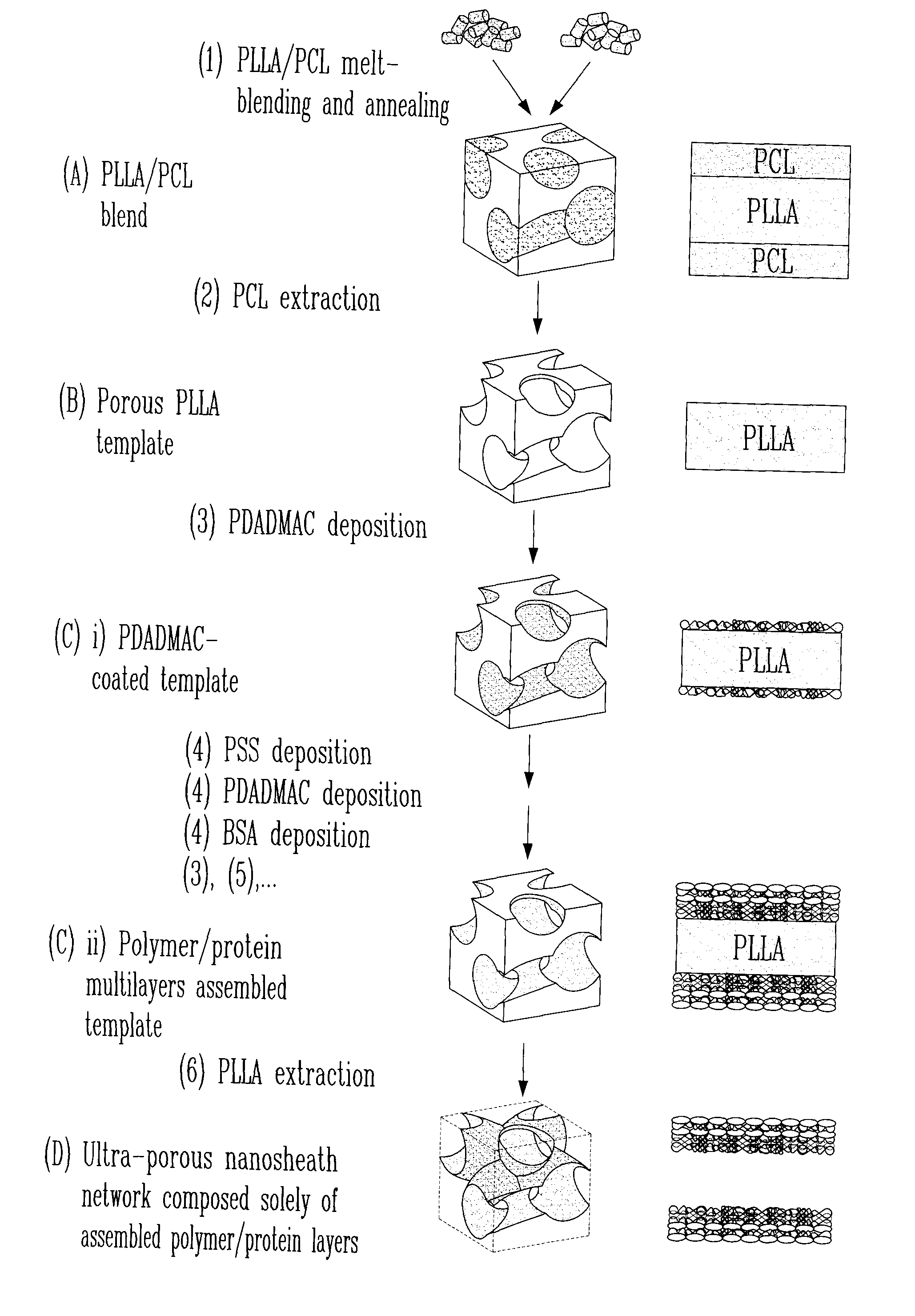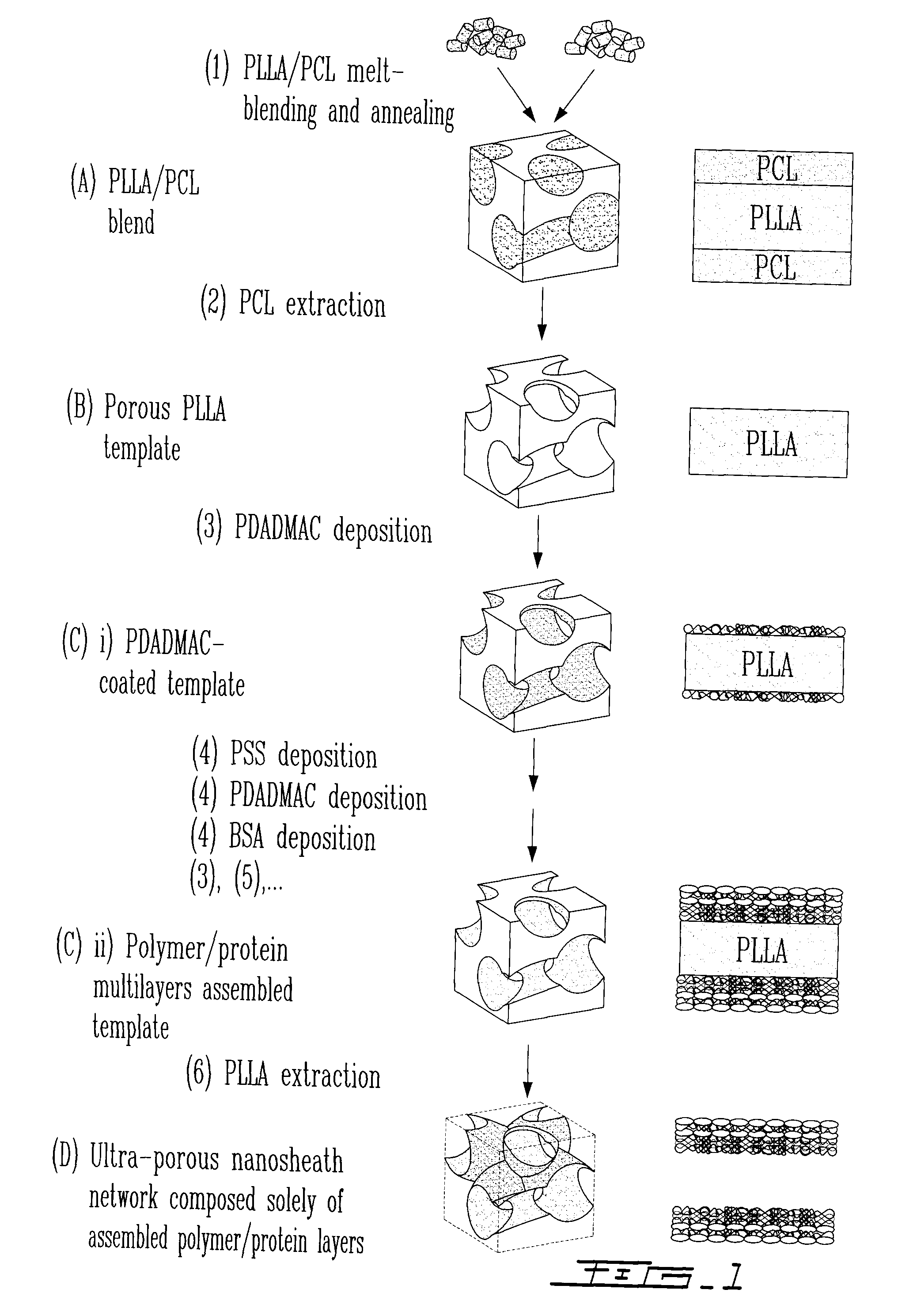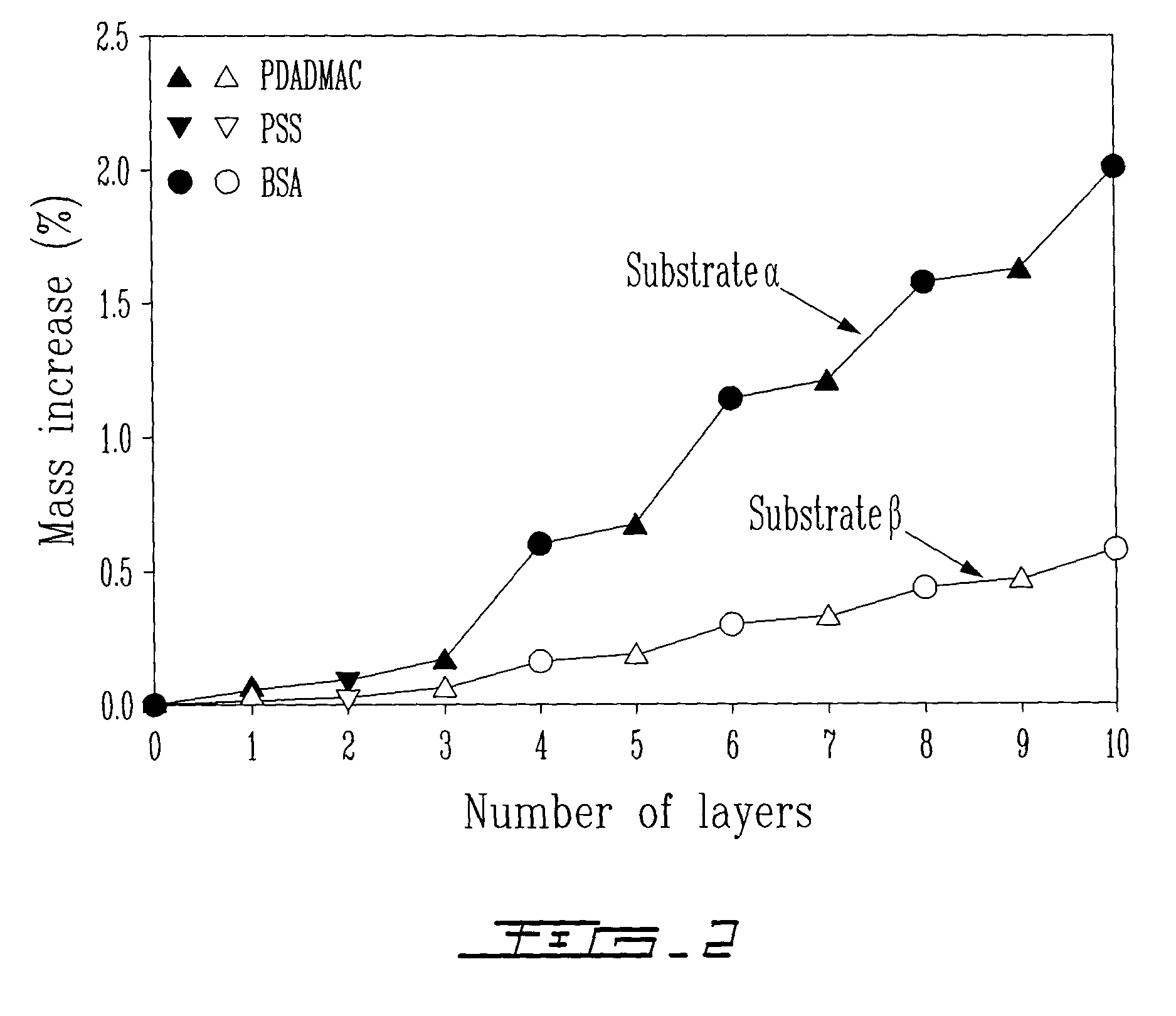Porous nanosheath networks, method of making and uses thereof
a nano-sheath and nano-fiber technology, applied in the field of porous materials, can solve the problems of low interconnectivity, low void volume, and severe limitations of each of these approaches
- Summary
- Abstract
- Description
- Claims
- Application Information
AI Technical Summary
Benefits of technology
Problems solved by technology
Method used
Image
Examples
Embodiment Construction
[0026]The present invention provides new porous materials and a method for making these high void volume materials. The method comprises LBL deposition on a porous co-continuous blend template followed by selective extraction of the template.
[0027]A clear advantage of the present method of prior art advances is the capability of close control over a wide range of pore size and void volume (up to 99.6%), combined with an interconnectivity of the pores network of 100%. Also, the use of the LBL deposition approach allows for an easy and straightforward functionalization of the structure by incorporating into the process bio- or chemically-active molecules, conducting polymers, functionalizing agents, etc.
[0028]Turning now to FIG. 1, the first step of the method is the blending of co-continuous synthetic polymer blends such as blends of poly(L-lactic acid) (PLLA) and poly(ε-caprolactone) (PCL), referred to as PLLA / PCL blends, via melt processing.
[0029]PLLA / PCL blends were prepared by me...
PUM
| Property | Measurement | Unit |
|---|---|---|
| pore wall thickness | aaaaa | aaaaa |
| specific surface area | aaaaa | aaaaa |
| pore diameters | aaaaa | aaaaa |
Abstract
Description
Claims
Application Information
 Login to View More
Login to View More - R&D
- Intellectual Property
- Life Sciences
- Materials
- Tech Scout
- Unparalleled Data Quality
- Higher Quality Content
- 60% Fewer Hallucinations
Browse by: Latest US Patents, China's latest patents, Technical Efficacy Thesaurus, Application Domain, Technology Topic, Popular Technical Reports.
© 2025 PatSnap. All rights reserved.Legal|Privacy policy|Modern Slavery Act Transparency Statement|Sitemap|About US| Contact US: help@patsnap.com



